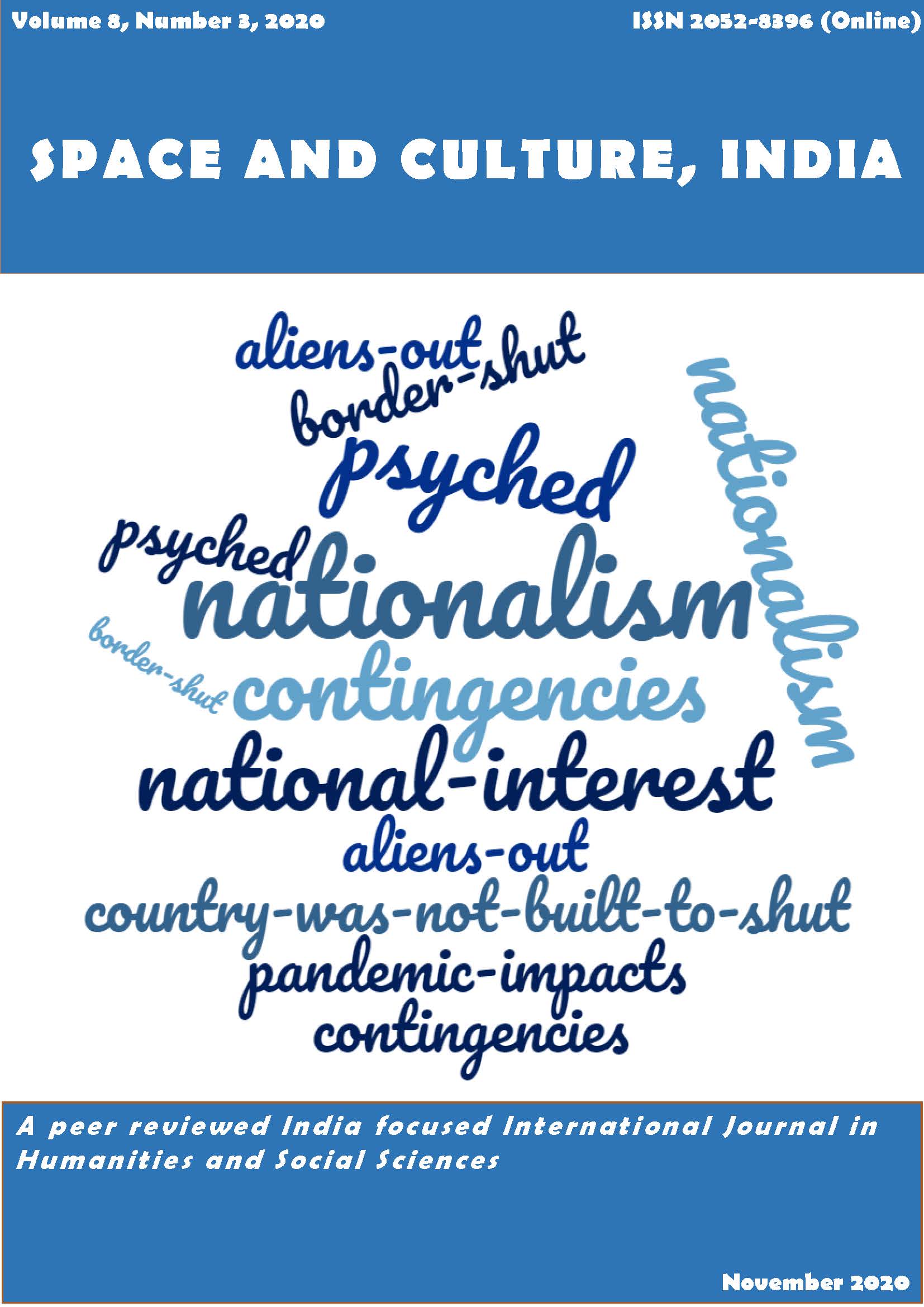Gender Equality in Asia-Pacific: Reflections on the Beijing+25 Review

Abstract
This article reviews the 25-year progress made in implementing the ‘Beijing Platform for Action’ and the challenges that remain towards achieving gender equality in the Asia-Pacific region. Adopted in 1995 at the Fourth World Conference on Women, the ‘Beijing Platform for Action’ has been hailed as the most progressive policy blueprint for gender equality and women’s empowerment. In November 2019, over 600 participants from 54 countries, comprising representatives from Governments, international organisations and civil society organisations attended the Asia-Pacific Ministerial Conference on the Beijing+25 Review in Bangkok. The delegations reviewed the “achievements, challenges and priority areas for realizing gender equality and women’s empowerment” (UNESCAP, 2019a:1) in Asia-Pacific. For 25 years, since the adoption of the ‘Beijing Platform for Action’, Asia-Pacific has witnessed significant progress in girls’ education and women’s health. Unprecedented progress has been made in and reducing maternal deaths and enhancing women’s representation in national parliaments and local governments in several countries. However, there are some enduring challenges, including women’s economic empowerment and political participation, and violence against women. Whilst women play a pivotal role in protecting the environment and natural resources, they have been underrepresented in environment-related decision making and negotiations. Accordingly, the key actions outlined by the ‘Asia-Pacific Declaration on Advancing Gender Equality and Women’s Empowerment: Beijing+25 Review’ cover a wide range of issues, from women’s economic empowerment, political participation, to women’s full and effective participation in environment conservation, climate action and peace building process.
Keywords
Gender Equality, Beijing Platform for Action, Beijing 25 Review, Asia-Pacific
References
- Dahiya, B. (2003). Hard Struggle and Soft Gains: Environmental Management, Civil Society and Governance in Pammal, South India, Environment & Urbanization, 15(1), 91-100. https://doi.org/10.1177/095624780301500108 DOI: https://doi.org/10.1177/095624780301500108
- Encyclopædia Britannica (2020). Chipko movement: Indian Environmental Movement. https://www.britannica.com/topic/Chipko-movement
- Government of Nepal (2019). Submission for the Twenty-fifth Anniversary of the Fourth World Conference on Women and Adoption of Beijing Declaration and Platform for Action (1995). https://www.unwomen.org/-/media/headquarters/attachments/sections/csw/64/national-reviews/nepal.pdf
- McKinsey Global Institute (2018). The Power of Parity: Advancing Women’s Equality in Asia Pacific. McKinsey and Company: New York.
- Mlambo-Ngcuka, P. (2020). Violence against Women and Girls: The Shadow Pandemic. https://www.unwomen.org/en/news/stories/2020/4/statement-ed-phumzile-violence-against-women-during-pandemic
- Sharma, A. (2015). Beijing+20: Some Musings. Space and Culture, India, 2(4), 1-2. https://doi.org/10.20896/saci.v2i4.127 DOI: https://doi.org/10.20896/saci.v2i4.127
- Shiva, V. and Bandyopadhyay, J. (1986). Chipko: India’s Civilisational Response to the Forest Crisis. INTACH: New Delhi.
- Stiglitz, J.E. (2003). The Roaring Nineties: A New History of the World’s Most Prosperous Decade. W.W. Norton & Company: New York.
- United Nations. (1995). Beijing Declaration and Platform for Action. https://www.un.org/en/events/pastevents/pdfs/Beijing_Declaration_and_Platform_for_Action.pdf
- United Nations (2015). Transforming Our World: The 2030 Agenda for Sustainable Development. A/RES/70/1.https://sustainabledevelopment.un.org/post2015/transformingourworld/publication
- United Nations (2020a). Fourth World Conference on Women (September 1995, Beijing, China). https://www.un.org/en/events/pastevents/women_conf_beijing_1995.shtml
- United Nations (2020b). Goal 5: Achieve Gender Equality and Empower all Women and Girls. https://www.un.org/sustainabledevelopment/gender-equality/
- United Nations Statistics Division (2020). Goal 5: Achieve Gender Equality and Empower all Women and girls. https://unstats.un.org/sdgs/report/2017/goal-05/
- UNESCAP (2010). Protecting Development Gains: Reducing Disaster Vulnerability and Building Resilience in Asia and the Pacific. The Asia-Pacific Disaster Report, 2010. UNESCAP: Bangkok.
- UNESCAP (2017). Gender, the Environment and Sustainable Development in Asia and the Pacific. https://www.unescap.org/sites/default/files/publications/SDD-Gender-Environment-report.pdf
- UNESCAP (2019a). Review of the Progress and Remaining Challenges in Implementation of the Beijing Declaration and Platform for Action in Asia and the Pacific. https://www.unescap.org/sites/default/files/Review_of_progress_%28ENG%29.pdf
- UNESCAP (2019b). Pathways to Influence: Promoting the Role of Women’s Transformative Leadership to Achieve the SDGs in Asia and the Pacific. Sales No.E.20.II.F.4.
- UNESCAP (2019c). Asia-Pacific Declaration on Advancing Gender Equality and Women’s Empowerment: Beijing+25 Review. ESCAP/MCBR/2019/2/Add.1. https://www.unescap.org/sites/default/files/Beijing%2B25-Declaration-%28ENG%29-20200220.pdf
- UNESCAP (2019d). Concept Note: 25th Anniversary of the Beijing Declaration and Platform for Action – Asia-Pacific Ministerial Conference on the Beijing+25 Review. https://tinyurl.com/yyh2hjvh
- UNESCAP (2019e). Population and Development in Asia and the Pacific: Lessons learned from the Midterm Review of the Asian and Pacific Ministerial Declaration on Population and Development. UNESCAP.
- UNESCAP (2019f). The Disaster Riskscape across Asia-Pacific: Pathways for Resilience, Inclusion and Empowerment. Asia-Pacific Disaster Report 2019. UNESCAP: Bangkok.
- UNESCAP (2020). SDG Gateway Data. https://dataexplorer.unescap.org/
- UNFCCC (2015). Paris Agreement. FCCC/CP/2015/L.9/Rev1. http://unfccc.int/resource/docs/2015/cop21/eng/l09r01.pdf
- UNFCCC (2019). Enhanced Lima work programme on gender and its gender action plan. UNFCCC. Conference of the Parties. https://unfccc.int/topics/gender/workstreams/the-gender-action-plan
- UNICEF (2019). Gender Counts (4 Subregional Reports for Asia and the Pacific). https://data.unicef.org/
- UN Women (2019). Gender Equality in Asia and the Pacific: 25 Years After The Beijing Declaration. https://asiapacific.unwomen.org/en/digital-library/publications/2019/11/infographics-gender-equality-in-asia-pacific
- WEF (2019). Global Gender Gap Report 2020. World Economic Forum: Geneva.
- Yale Forum on Religion and Ecology (2020). Chipko Movement. https://fore.yale.edu/World-Religions/Hinduism/Engaged-Projects/Chipko-Movement